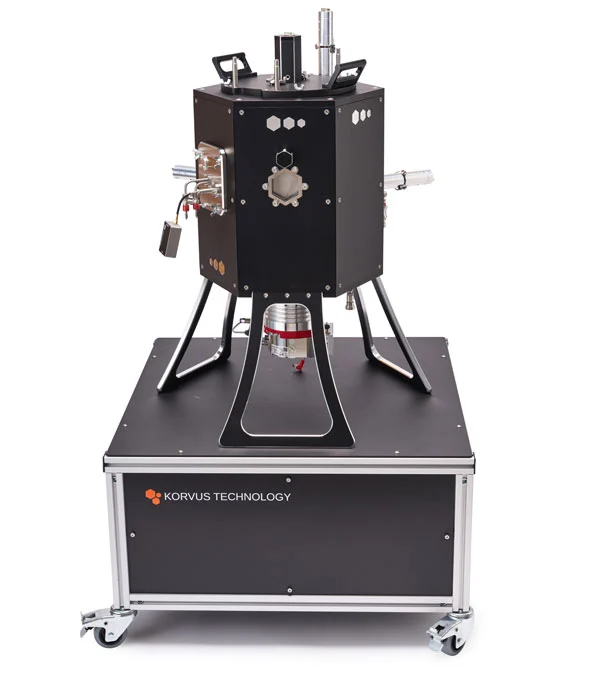Why The HEX Series?

The HEX system consists of a six-sided aluminium single piece high-vacuum chamber that is lightweight yet rigid enough for most physical vapour deposition applications. The hexagonal structure supports six modular panels, including:
- Blank panel
- Viewport panel
- Deposition source panel
- QCM panel for in-situ monitoring
- Custom panel for third-party instrument integration

Thin Film Deposition Systems
The HEX Series of thin film deposition systems are uniquely designed to be completely modular.
Each thin film deposition system comes with detachable side panels. This allows users to begin with a relatively simple setup and upgrade or reconfigure their system in-line with their research needs or budget.
These upgrades are modular and simple to install, eliminating system downtime.
The HEX Series includes the benchtop HEX and the larger HEX-L and HEX-XL Systems. (See “HEX vs HEX-L vs HEX-XL” page).

The HEX Series
Thin Film Deposition Systems
THE HEX SERIES
The HEX Series includes the benchtop HEX and the larger HEX-L and HEX-XL Systems
HEX
Benchtop or rack-mounted compact system
- Maximum Sample Size Diameter: 4" (100mm)
- Deposition Sources: Up to 3
- Magnetron Sputter Size (Diameter): 2"
- Chamber Volume: 12 L - (24 L When Stacked)
- Base Pressure: 5×10-7 mbar*

*Ultimate base pressure is on factory tested systems. Subsequent base pressure depends on a variety of factors such as chamber cleanliness, user operation and lab environment.
HEX-L
Mobile base-stand-mounted system
- Maximum Sample Size Diameter: 6" (150mm)
- Deposition Sources: Up to 6
- Magnetron Sputter Size (Diameter): 2" or 3"
- Chamber Volume: 50L - (100L When Stacked)
- Base Pressure: <5×10-7 mbar*

*Ultimate base pressure is on factory tested systems. Subsequent base pressure depends on a variety of factors such as chamber cleanliness, user operation and lab environment.
HEX-XL
Larger mobile base-stand-mounted system
- Maximum Sample Size Diameter: up to 12" (300mm)
- Deposition Sources: Up to 6
- Magnetron Sputter Size (Diameter): 3" or 4"
- Chamber Volume: 86 L - (172 L When Stacked)
- Base Pressure: <5×10-7 mbar*

*Ultimate base pressure is on factory tested systems. Subsequent base pressure depends on a variety of factors such as chamber cleanliness, user operation and lab environment.
